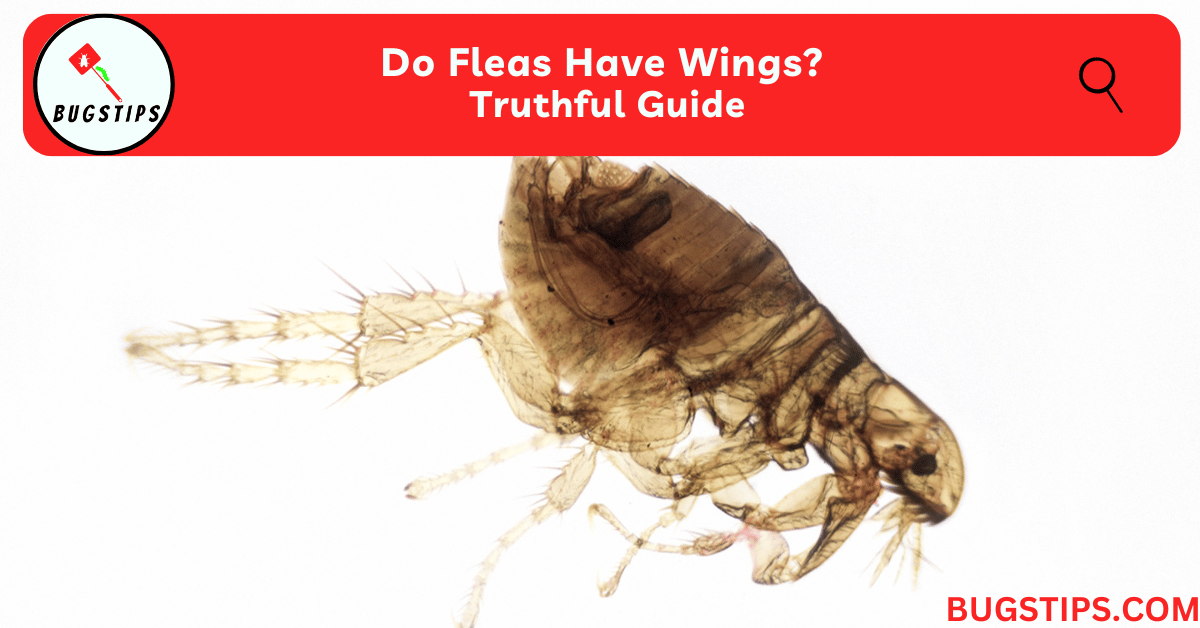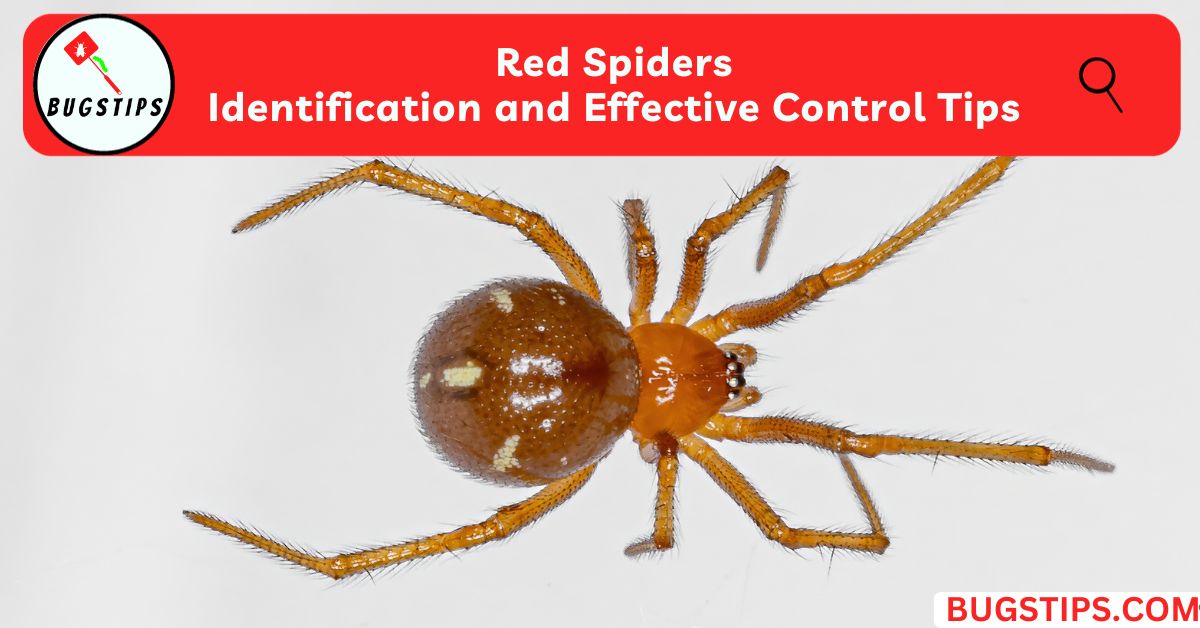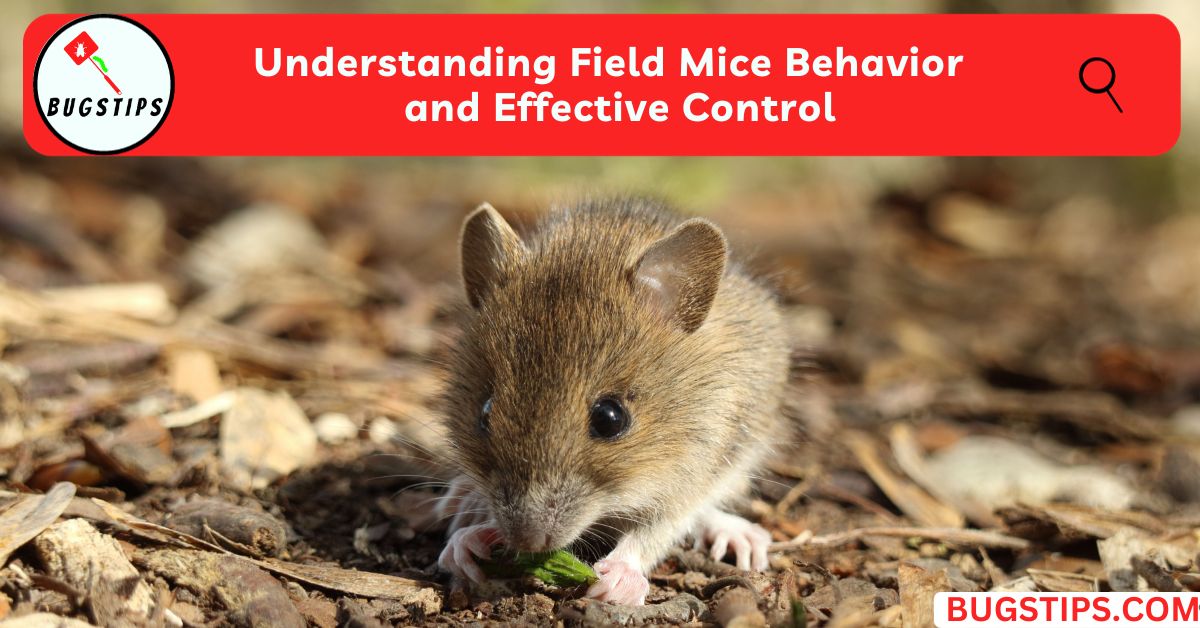This post may contain affiliate links which means as an Amazon Associate, this site may earn a small commission on qualified purchases made through links at no extra cost to you. Learn more on Affiliate Disclosure
There’s a widespread belief that fleas have wings, but is it actually true? Many people assume that they do, but this is a common misconception that we’re here to clear up today.
In this article, we’ll be diving deep into the question, “Do fleas have wings?” and answering other common questions related to these pesky insects.
Whether you’re dealing with a flea infestation in your home or just curious about these tiny creatures, keep reading our informative guide to find out more!
What Are Fleas?
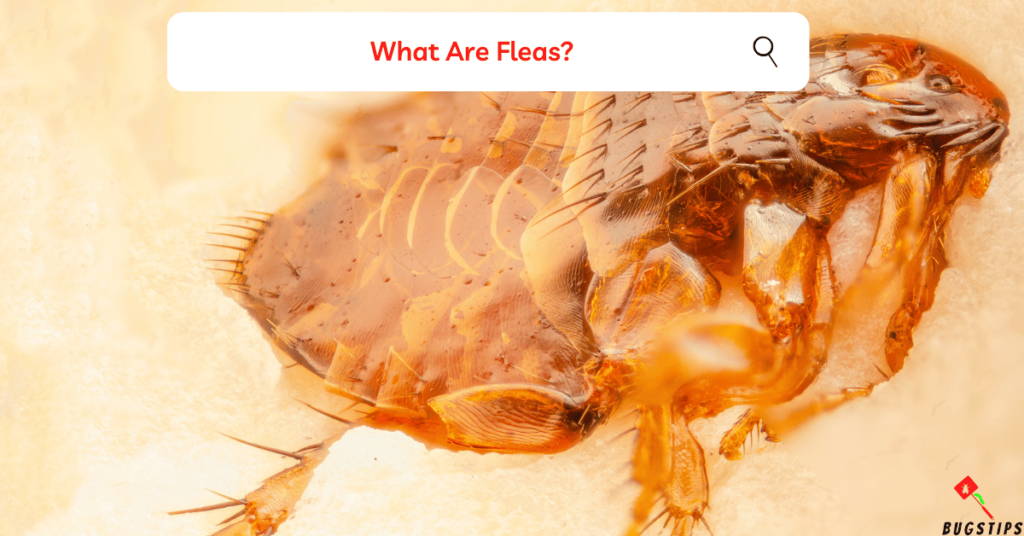
Before we dive into the question of whether fleas have wings, let’s start by understanding what fleas actually are.
Fleas are tiny, parasitic insects that belong to the order Siphonaptera. They are ectoparasites, meaning they live on the external surface of their hosts, which are often mammals or birds.
These minuscule pests have flattened body that allows them to easily navigate through the fur or feathers of their hosts. With their sharp mouthparts, fleas feed on the blood of their hosts, causing discomfort and irritation.
Fleas are notorious for their ability to reproduce rapidly, infesting both animals and human homes. Their bites can result in itchy red bumps and may even cause allergic reactions in some individuals.
Related Article – What Do Fleas Look Like to the Human Eye?
Do Fleas Have Wings?
To answer the burning question of whether fleas have wings, we need to look into the anatomy of these tiny insects. Fleas, despite their small size, have a fascinating body structure that sets them apart from other winged insects.
Fleas are wingless insects, meaning they do not possess wings. Instead, their bodies are streamlined and compact, allowing them to easily maneuver through the fur or feathers of their hosts. The absence of wings is a crucial adaptation for their survival and lifestyle.
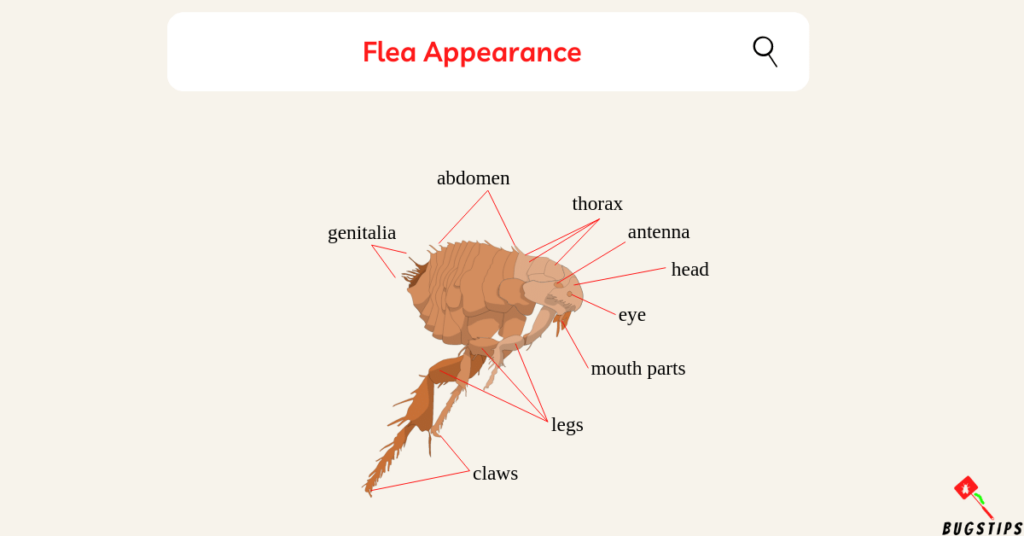
But why don’t fleas have wings? The answer lies in the evolutionary trade-offs and specific needs of these pesky parasites. Wings require significant energy investment to develop and maintain.
Fleas, being expert bloodsuckers, have evolved to conserve their energy for essential activities such as finding hosts, reproducing, and feeding.
Furthermore, the lack of wings allows fleas to navigate their hosts’ dense coats or feathers without hindrance. Imagine the challenges wings would present as fleas try to move through the tiniest of spaces.
Their flattened bodies and powerful legs provide them with optimal mobility, enabling them to quickly navigate and locate suitable feeding sites.
So, while many insects rely on wings for flight, fleas have evolved to thrive without them, utilizing their unique adaptations for survival. The absence of wings is just one of the many intriguing aspects that make fleas fascinating creatures in their own right.
Do Dog Fleas Have Wings?
Dog fleas, scientifically known as Ctenocephalides canis, are one of the most common flea species found on domestic dogs.
These fleas are wingless insects, just like their counterparts in the flea family. While they lack wings, dog fleas have evolved powerful hind legs that enable them to jump astonishingly distances.
Their exceptional jumping ability compensates for their inability to fly, allowing them to move efficiently between hosts.
Do Sand Fleas Have Wings?
Sand fleas, also referred to as beach hoppers or sand fleas in some regions, are not true fleas but rather a type of crustacean called amphipods.
These marine creatures are found in sandy coastal areas and have adapted to their beach habitats. Unlike fleas, sand fleas are wingless and rely on their well-developed legs to hop and burrow into the sand.
Do Rat Fleas Have Wings?
Rat fleas, specifically the species Xenopsylla cheopis, are notorious carriers of diseases and are associated with rodents such as rats.
These fleas, like other fleas, are wingless insects. They have a flattened body that allows them to navigate through the fur of their rodent hosts.
While rat fleas cannot fly, their remarkable jumping ability enables them to move swiftly from one host to another, contributing to the spread of diseases.
Related Article – Little Black Bugs in My Car Expert Removal Guide
What is the Bug That Looks Like a Flea With Wings?
If you’ve ever come across a small insect that looks like a flea but has wings, you may be encountering a gnat. Gnats are a common type of flying insect that can be mistaken for fleas due to their small size and similar appearance.
However, it’s important to note that gnats, unlike fleas, do have wings
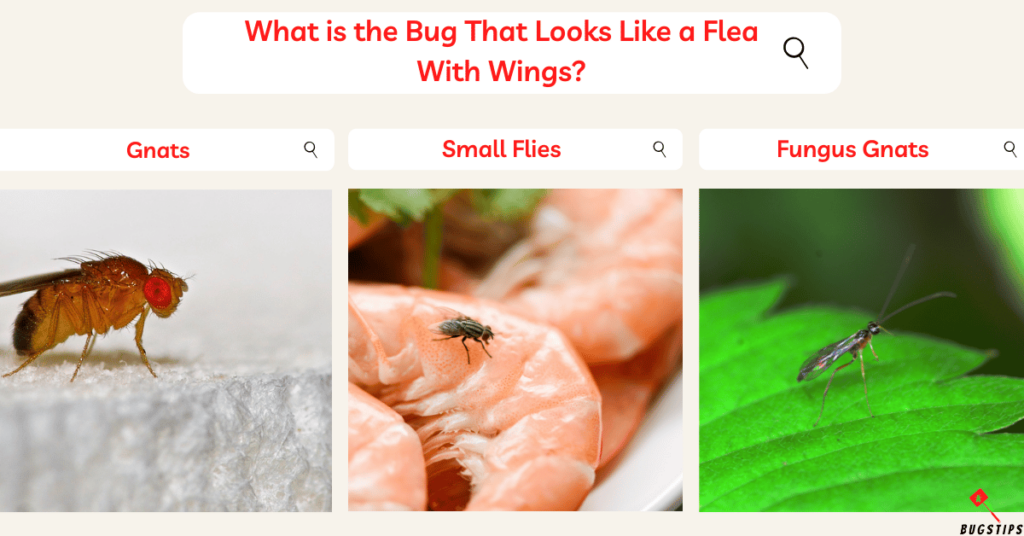
Gnats
Gnats are a broad term that encompasses various small flying insects. They are often found in humid environments and are attracted to areas with decaying organic matter.
While gnats may have a similar size and jumping behavior to fleas, their distinguishing feature is their possession of wings.
These wings enable gnats to fly, distinguishing them from wingless fleas.
Small Flies
Another type of flying insect that may resemble fleas are small flies. These tiny flies, such as fruit flies or drain flies, are often found near moist or decaying organic matter.
Like gnats, small flies have wings, allowing them to fly around freely.
Fungus Gnats
Fungus gnats are a specific type of gnat that is commonly found in areas with damp soil or overwatered plants.
These tiny insects are attracted to fungi and can often be seen hovering around potted plants. Fungus gnats, like other gnats, possess wings that enable them to fly.
While these insects may bear some similarities to fleas in terms of size and appearance, their possession of wings sets them apart.
Related Article – 10 Long Skinny Black Bugs in House
So, if you've encountered a tiny insect that jumps and has wings, chances are you're dealing with a gnat, small fly, or fungus gnat rather than a wingless flea.
What Bug Looks Like a Flea But Doesn’t Jump?
While fleas are notorious for their remarkable jumping ability, there are several insects that may resemble fleas in appearance but differ when it comes to their jumping prowess.
Let’s explore a few of these bugs
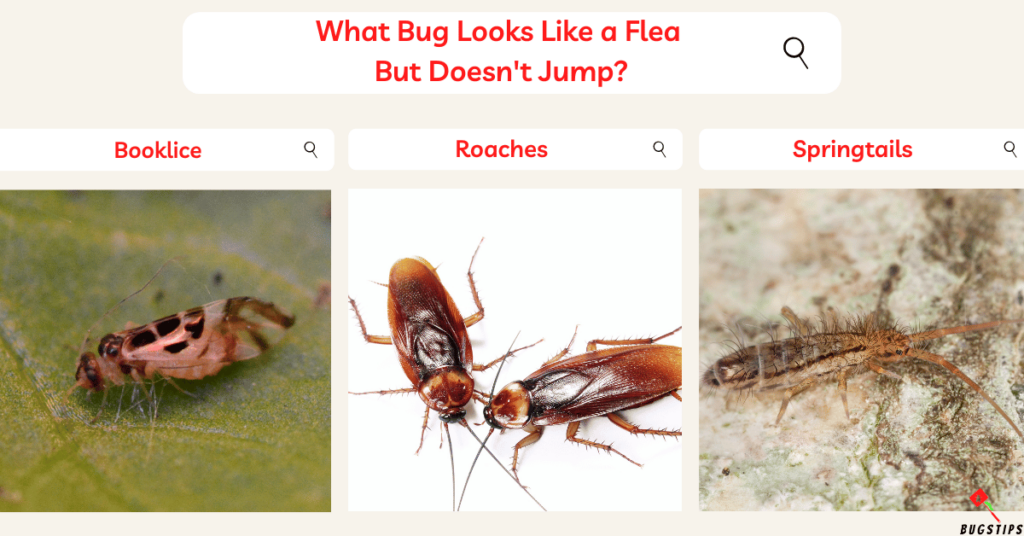
Booklice
As the name suggests, booklice are tiny insects that are commonly found in homes, particularly in areas with high humidity.
These bugs don’t bite like fleas, and unlike fleas, they can’t jump or fly. Booklice are harmless creatures that feed on mold and mildew, often found in damp environments.
Although they may bear a resemblance to fleas in size and appearance, their lack of jumping ability sets them apart.
Roaches
Roaches, or cockroaches, are crawling insects that can also fly, but they do not possess the incredible jumping ability of fleas.
While adult roaches have wings and can fly short distances, their flight is not comparable to the rapid and targeted jumps of fleas.
However, it’s important to note that cockroach nymphs, the younger stages of cockroaches, do not have wings.
This can sometimes lead to them being mistaken for fleas due to their similar appearance.
Springtails
Springtails are tiny bugs that are usually found in large groups around moisture and mold. They can jump, but they are not fleas.
Unlike fleas, springtails do not bite and are not parasitic. Instead, they feed on decaying organic matter and thrive in damp environments.
Their ability to jump can sometimes lead to confusion with fleas, but their behavior, feeding habits, and lack of biting distinguish them from actual fleas.
You May Also Like – 9 Types of Swimming Pool Bugs You Should Know
How Do Fleas Travel So Fast?
Fleas are incredibly fast-moving insects, capable of jumping up to 100 times their own body length. Their speed is due to several factors, including their unique anatomy and the way they jump.
Resilin
One key factor behind a flea’s high-speed travel lies in its unique anatomy. Fleas possess an elastic pad known as resilin, which acts as a highly efficient spring.
When a flea prepares to jump, this resilin pad is compressed, storing energy like a coiled spring.
Once released, the stored energy propels the flea into the air, launching it forward with great force.
Toe Gripping
Fleas have specially adapted toes that enable them to grip surfaces firmly. Their toes act as levers, allowing them to push off the ground with exceptional strength and precision.
By utilizing this gripping mechanism, fleas can generate the necessary force to launch themselves into the air and achieve impressive heights.
Short Legs and Quick Acceleration
Unlike insects with long legs that have more time to accelerate before taking off, fleas have relatively short legs.
This means they must rely on rapid acceleration to achieve their extraordinary jumps. With their powerful leg muscles, fleas can generate forces up to 100 times their own body weight.
This immense force, combined with their short legs, enables them to achieve remarkable acceleration in a fraction of a second.
How Far Can Fleas Travel on Their Own?
Fleas have different abilities to travel on their own depending on their life stage and whether they have a host.
Here, we’ll explore the distances that fleas can cover independently.
Adult Fleas
Adult fleas, while capable of jumping, typically do not travel long distances without a host. Instead, they prefer to wait in the environment and latch onto passing animals or humans.
By detecting vibrations and body heat, adult fleas can quickly leap onto a suitable host for a blood meal and transportation to new locations.
Flea Larvae
Flea larvae, the immature stage of fleas, do not possess the same jumping ability as adult fleas.
Instead, they have limited mobility and tend to stay in the immediate vicinity of their hatching site. Cat flea larvae, for example, rarely venture further than 15-20 centimeters from their original location.
In ideal conditions, some larvae have been observed migrating up to a maximum of 46 centimeters.
Fleas Without a Host
When fleas find themselves without a host, such as when they are dislodged from an animal or in the absence of suitable hosts in the environment, they may attempt to travel on their own.
In such cases, a flea without a host can cover distances ranging from 10 to 50 meters or more.
However, it’s important to note that without a host, the energy reserves of the flea will gradually deplete, limiting its ability to sustain long-distance travel.
Jumping Distance
Fleas are renowned for their extraordinary jumping prowess. On average, a flea can jump at a horizontal distance of approximately 8 inches, which is quite remarkable considering its small size.
However, it’s worth noting that some fleas have been recorded jumping as far as 20 inches.
This astonishing jumping ability allows fleas to cover distances of up to 50 times their own body length.
Final Thoughts
Fleas don’t have wings. Instead, their unique anatomy, including their elastic pad made of resilin, their toes, and their powerful leg muscles, allows them to move quickly and jump great distances.
By understanding the characteristics of fleas and their behaviors, you can better identify and address any infestations or concerns you may have.
Remember to take proactive measures like regularly treating your pets with flea medication and keeping your home clean and clutter-free to prevent fleas from infesting your home.
FAQs
Do fleas have wings?
No, fleas do not have wings. They are wingless insects.
What looks like a flea but has wings?
Gnats, small flies, and fungus gnats are flying insects that may resemble fleas but possess wings.
Do fleas have wings and antennae?
Fleas do not have wings, but they do have antennae. These antennae help them in sensing their environment.
What bug looks like a flea but doesn’t jump?
Some insects that resemble fleas in appearance but do not jump include booklice, roaches (specifically nymphs), and springtails. These bugs may bear similarities to fleas but have different characteristics and behaviors.
Resources – (for further reading)
University of California, Berkeley – Introduction to the Siphonaptera
University of Florida – dog flea – Ctenocephalides canis (Curtis), oriental rat flea
Britannica – Gnat | insect

